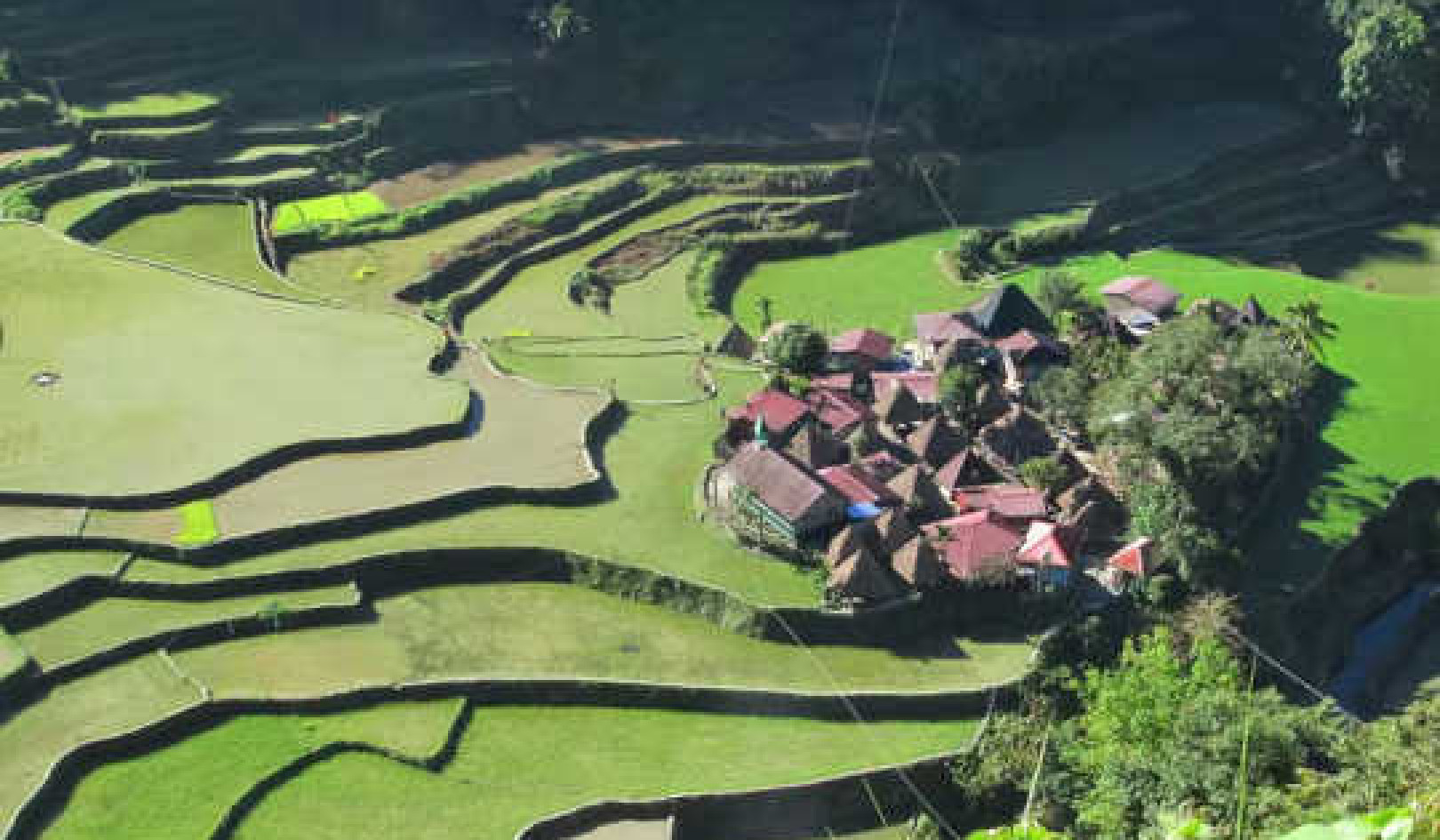 Η ζωή στην τελευταία περίοδο του θερμοκηπίου του πλανήτη, το Eocene. Jay Matternes / Μουσείο Smithsonian, CC BY
Η ζωή στην τελευταία περίοδο του θερμοκηπίου του πλανήτη, το Eocene. Jay Matternes / Μουσείο Smithsonian, CC BY
Οι συγκεντρώσεις διοξειδίου του άνθρακα κατευθύνονται προς τιμές που δεν φαίνονται τα τελευταία 200 εκατομμύρια χρόνια. Ο ήλιος ενισχύεται σταδιακά με την πάροδο του χρόνου. Συνολικά, αυτά τα γεγονότα σημαίνουν ότι το κλίμα μπορεί να κατευθύνεται προς τη ζεστασιά που δεν έχει δει τα τελευταία μισά δισεκατομμύρια χρόνια. ![]()
A lot has happened on Earth since 500,000,000BC – continents, oceans and mountain ranges have come and gone, and complex life has evolved and moved from the oceans onto the land and into the air. Most of these changes occur on very long timescales of millions of years or more. However, over the past 150 years global temperatures have increased by about 1?, ice caps and glaciers have retreated, polar sea-ice has melted, and sea levels have risen.
Κάποιοι θα επισημάνουν ότι το κλίμα της Γης έχει έχουν υποστεί παρόμοιες αλλαγές στο παρελθόν. Ποια είναι λοιπόν η μεγάλη υπόθεση;
Οι επιστήμονες μπορούν να προσπαθήσουν να κατανοήσουν τα προηγούμενα κλίματα κοιτάζοντας τα στοιχεία που είναι κλειδωμένα σε βράχια, ιζήματα και απολιθώματα. Αυτό που μας λέει είναι ότι ναι, το κλίμα έχει αλλάξει στο παρελθόν, αλλά η τρέχουσα ταχύτητα αλλαγής είναι πολύ ασυνήθιστο. Για παράδειγμα, το διοξείδιο του άνθρακα δεν έχει προστεθεί στην ατμόσφαιρα τόσο γρήγορα όσο σήμερα για τουλάχιστον το παρελθόν 66 εκατομμύρια χρόνια.
In fact, if we continue on our current path and exploit all convention fossil fuels, then as well as the rate of CO? emissions, the absolute climate warming is also likely to be unprecedented in at least the past 420m years. That’s according to a new study we have published in Nature Communications.
In terms of geological time, 1? of global warming isn’t particularly unusual. For much of its history the planet was significantly warmer than today, and in fact more often than not Earth was in what is termed a “greenhouse” climate state. During the last greenhouse state 50m years ago, global average temperatures were 10-15? warmer than today, the polar regions were ice-free, φοίνικες αναπτύχθηκαν στην ακτή της Ανταρκτικής, και οι αλιγάτορες και οι χελώνες βυθίστηκαν σε βάλτο-δάση σε μια παγωμένη Καναδική Αρκτική.
Αντιθέτως, παρά την τρέχουσα υπερθέρμανση, είμαστε ακόμα τεχνικά σε μια κλιματική κατάσταση «παγόβουνο», πράγμα που σημαίνει απλά ότι υπάρχει πάγος και στους δύο πόλους. Η Γη έχει φυσικά κύκλο μεταξύ αυτών των δύο κλιματικών καταστάσεων κάθε 300 μέτρα περίπου.
Just prior to the industrial revolution, for every million molecules in the atmosphere, about 280 of them were CO? molecules (280 parts-per-million, or ppm). Today, due primarily to the burning of fossil fuels, concentrations are about 400 ppm. In the absence of any efforts to curtail our emissions, burning of conventional fossil fuels will cause CO? concentrations to be around 2,000ppm by the year 2250.
This is of course a lot of CO?, but the geological record tells us that the Earth has experienced similar concentrations several times in the past. For instance, our new compilation of data shows that during the Triassic, around 200m years ago, when dinosaurs first evolved, Earth had a greenhouse climate state with atmospheric CO? around 2,000-3,000ppm.
Έτσι, οι υψηλές συγκεντρώσεις διοξειδίου του άνθρακα δεν κάνουν απαραίτητα τον κόσμο εντελώς ακατοίκητο. Οι δεινόσαυροι άνθισαν τελικά.
Αυτό όμως δεν σημαίνει ότι δεν είναι μεγάλη υπόθεση. Για αρχή, δεν υπάρχει αμφιβολία ότι η ανθρωπότητα θα αντιμετωπίσει σημαντικές κοινωνικοοικονομικές προκλήσεις που αντιμετωπίζουν δραματική και ταχεία αλλαγή του κλίματος που θα προκύψει από την ταχεία αύξηση στα 2,000 ή περισσότερα ppm.
But our new study also shows that the same carbon concentrations will cause more warming in future than in previous periods of high carbon dioxide. This is because the Earth’s temperature does not just depend on the level of CO? (or other greenhouse gases) in the atmosphere. All our energy ultimately comes from the sun, and due to the way the sun generates energy through nuclear fusion of hydrogen into helium, its brightness has increased over time. Four and a half billion years ago when the Earth was young the sun was around 30% less bright.
So what really matters is the combined effect of the sun’s changing strength and the varying greenhouse effect. Looking through geological history we generally found that as the sun became stronger through time, atmospheric CO? gradually decreased, so both changes cancelled each other out on average.
Τι γίνεται όμως στο μέλλον; Δεν βρήκαμε προηγούμενη χρονική περίοδο όταν οι οδηγοί του κλίματος ή εξαναγκασμού του κλίματος, ήταν τόσο υψηλό όσο θα ήταν στο μέλλον, εάν καίμε όλα τα εύκολα διαθέσιμα ορυκτά καύσιμα. Τίποτα σαν αυτό δεν έχει καταγραφεί στο ροκ ρεκόρ για τουλάχιστον 420m χρόνια.
Ένας κεντρικός πυλώνας της γεωλογικής επιστήμης είναι ο ενιαία αρχή: that “the present is the key to the past”. If we carry on burning fossil fuels as we are at present, by 2250 this old adage is sadly no longer likely to be true. It is doubtful that this high-CO? future will have a counterpart, even in the vastness of the geological record.
Σχετικά με τους συγγραφείς
Γκάβιν Φόστερ, Καθηγητής Ισότοπης Γεωχημείας, Πανεπιστήμιο του Σαουθάμπτον; Dana Royer, καθηγήτρια Επιστημών της Γης και Περιβάλλοντος, Πανεπιστήμιο Wesleyan, και Dan Lunt, Καθηγητής Επιστήμης του Κλίματος, Πανεπιστήμιο του Μπρίστολ
Αυτό το άρθρο δημοσιεύθηκε αρχικά στις Η Συνομιλία. Διαβάστε το αρχικό άρθρο.
Σχετικά βιβλία
at InnerSelf Market και Amazon






















